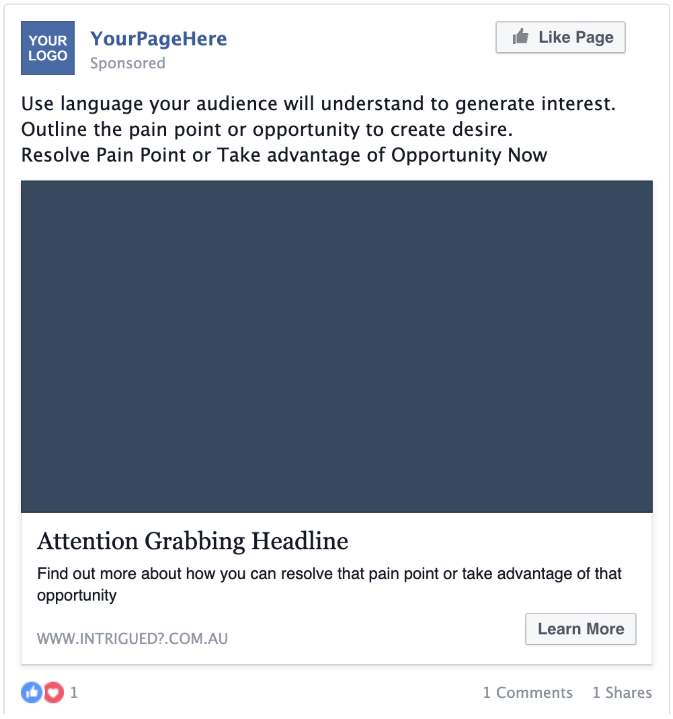PPC Advertising: Playing by the ‘House Rules’ When Writing Ad Copy
PPC advertising can be a struggle for business owners for a few reasons. Some are a simple fix, others aren’t. Some you just need to understand there’s no getting around the set rules. Similar to board games like Monopoly, Scrabble and Yahtzee, the rules are in place and you need to learn to accept and keep going. Similar to when writing ad copy for Facebook and Google.
Have you ever fought over the rules while playing Monopoly?
Well, when you play, you’ve got a set of guidelines agreed upon by the group or whoever is hosting the game (House Rules) that the game manufacturer has created.
Although online advertising can be empowering thanks to the control you have, similarly to Monopoly, it can also be frustrating to play by someone else’s rules.
Regardless of your online advertising platform-of-choice, when publishing an ad, you need to keep in mind that platform has its own set of house rules. These rules determine how you are allowed to communicate visually through imagery, as well as through your ad copy.
The House Rules of a given ad platform will be determined by the mission or community guidelines of that platform. In this blog, we’re going to go over the house rules for the two major PPC advertising player, Facebook and Google.
We’ll look into their each advertising platforms practical mission. This means giving a quick breakdown of how they run their business, make money, retain users, grow, what it really means and why their rules are the way they are. As well as how you can run your PPC advertising campaigns to not be in breach of their rules. They are:
Facebook House Rules
Facebook’s Official mission:
“Give people the power to build community and bring the world closer together.”
Facebook’s practical mission:
To retain a user’s interest and get them to engage with their site as much and for as long as possible, providing advertisers with a platform.
This means anything that shortens the number of time users spend on the platform gets the flick.
Disallowed advertising are ads that;
- Discriminate based on demographic information (age, sex, gender etc.)
- Promote Adult content, products, or services
- Is exceedingly controversial, shocking, sensational or violent
- Talks about personal attributes or health
What this means
What this really means is that Facebook likes to provide an environment where users don’t feel “called-out”. Effectively looking to prevent advertisers using users’ information to confront, upset or offend them through inappropriate content.
Facebook is particularly tight on their rules of using personal information in ads after the Facebook–Cambridge Analytica data scandal. What does this mean for your ads on this platform;
When writing ad copy, you cannot include text referencing or alluding to personal attributes or characteristics of the individual, for example;
- You can say “Date Christian singles!” but you can’t say “Are you Christian?” or “Date other Christians”
- You can say “We print customisable t-shirts with your name!” but you can’t say “Connor Brown, get this t-shirt with your name on it!”
None of this means that Facebook doesn’t work well as an advertising platform. Facebook have billions of users every day and you can use targeting methods including their location, interests, behaviours and connections to make sure that you’re reaching the RIGHT audience.
Facebook’s context and its practical use
The fantastic thing about advertising on Facebook is the wide variety of formats and methods that are open to you.
It’s important to match the content to the context Facebook uses interruptive advertising to deliver your message. This means that people aren’t searching for you or your product at that time, so you want to make your copy reflect the rest of their browsing experience.
It’s also important that your ad copy and visual (whether it be an image or video) work together to achieve a couple of things. You have to grab their Attention, get them Interested, create Desire and get them to take Action. (AIDA)
If you have your targeting right, you can use language that only your audience will understand to grab their attention and get them interested.
You then have to outline the pain point or opportunity that your product/service aims to address, to create the desire.
Once you’ve got them hooked, you must tell them what step they need to take next! A call-to-action such as “Learn more”, if it’s a more involved purchase, or “Shop Now” if it’s a simple one should be in place.

Tip: We recommend writing ad copy to keep its length at about 200 characters so it isn’t truncated, but you do have the option of telling a longer more involved ‘story’ if that works for your service/product.
Google House Rules
Google’s Official Mission:
“To organise the world’s information and make it universally accessible and useful.”
Google’s practical mission:
To provide useful information and get users to engage with the search engine, providing paying advertisers with a platform.
To make sure the information they place in front of their audience is useful and engaging, Google’s ad platform will charge the advertiser more or less dependant on how relevant the ad is to a user’s search.
If you’re interested in how exactly they do this read this article: https://www.wordstream.com/quality-score
What this means is that Google can essentially squeeze out irrelevant advertisers to create a better experience for their users.
Google’s context and its practical use
Now we understand that it’s important to match the content to the context, Google’s ad platform allows advertisers to engage with potential customers as they are searching for their particular product, or something related to their product (dependant on your targeting).
This means that advertisers can be more specific in their ad copy and effectively call-out users with a higher rate of effectiveness based on the keywords they have entered into the search engine.
For this article, we are going to specifically discuss text ads which are the most common type of Google Ads advertising. They provide significantly less room to wiggle in terms of characters than Facebook Ads but the same AIDA rule can be applied.
At its most basic, a text ad has 2-3 Headlines, 2 Descriptions and a Display path which you can customise.

Use the Headlines 1 & 2 grab the user’s Attention and generate Interest by closely matching what they put into the search engine & outline your specific offering – this can be difficult as you only have 30 characters a-piece to do so!
Use the Display path to let the user know where they can be expected to be taken if they click on the Ad.
Use Descriptions 1 & 2 to give more detail about your offering (Desire), your business and include a Call-To-Action.
The more effectively you can match your search targeting up with your ad copy & subsequent landing page, the less you’ll pay and the better your ads will perform.
Most searches these days will result in 3-4 ads at the top of the page (include reference). Make sure that your ad stands, but for being clear & concise, not fancy lettering.
Google requires that all ads meet high professional and editorial standards. For example, the gimmicky use of numbers, symbols, or punctuation, such as f1owers, fl@wers, Flowers!!!, f*l*o*w*e*r*s, or F.L.O.W.E.R.S is unacceptable.
In summary
PPC advertising can be a tricky business for a host of reasons. Understanding the rules associated with each platform being just one part of it.
Given that each platform has its own morals, business objectives, strategies, and hot-button topics and issues, it’s essential for every advertiser to understand each platforms ‘house rules’ when conducting PPC advertising.
It’s for this reason, we listed not only Facebook and Google’s (the main PPC advertising platforms) positions on running ads, but broke down what they actually mean and how you can use it.
We have listed the links to all main advertising platforms’ advertising policies below, where you can see for yourself what you’re allowed to advertise and how to go about it.
Google/YouTube Advertising Policy
We want to hear from you! Follow us on LinkedIn, Facebook and Instagram to keep up with us, get our notifications and start a conversation!


 Level 28, AMP Tower, 140 St Georges Terrace, Perth WA, 6000
Level 28, AMP Tower, 140 St Georges Terrace, Perth WA, 6000  +61 8 6244 0022
+61 8 6244 0022 

